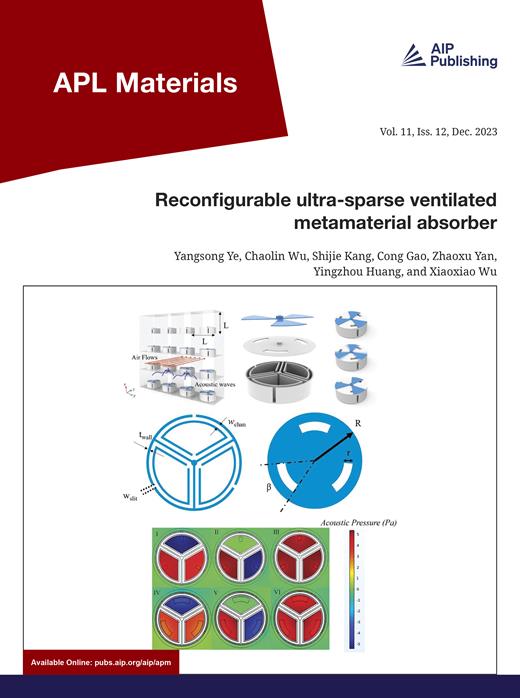High-temperature insulating ferromagnetic state in charge-disproportionated and spin-state-disproportionated strained SrCoO2.5 thin film
IF 5.3
2区 材料科学
Q2 MATERIALS SCIENCE, MULTIDISCIPLINARY
引用次数: 0
Abstract
Ferromagnetic insulators (FMIs) have widespread applications in microwave devices, magnetic tunneling junctions, and dissipationless electronic and quantum-spintronic devices. However, the sparsity of the available high-temperature FMIs has led to the quest for a robust and controllable insulating ferromagnetic state. Here, we present compelling evidence of modulation of the magnetic ground state in a SrCoO2.5 (SCO) thin film via strain engineering. The SCO system is an antiferromagnetic insulator with a Neel temperature, TN, of ∼550 K. Applying in-plane compressive strain, the SCO thin film reveals an insulating ferromagnetic state with an extraordinarily high Curie temperature, TC, of ∼750 K. The emerged ferromagnetic state is associated with charge-disproportionation (CD) and spin-state-disproportionation (SSD), involving high-spin Co2+ and low-spin Co4+ ions. The density functional theory calculation also produces an insulating ferromagnetic state in the strained SCO system, consistent with the CD and SSD, which is associated with the structural ordering in the system. Transpiring the insulating ferromagnetic state through modulating the electronic correlation parameters via strain engineering in the SCO thin film will have a significant impact in large areas of modern electronic and spintronic applications.电荷不成比例和自旋态不成比例应变 SrCoO2.5 薄膜中的高温绝缘铁磁态
铁磁绝缘体(FMIs)在微波设备、磁隧道结、无耗散电子设备和量子自旋电子设备中有着广泛的应用。然而,由于现有高温铁磁绝缘体的稀缺性,人们开始寻求一种稳健、可控的绝缘铁磁态。在这里,我们提出了通过应变工程调制 SrCoO2.5 (SCO) 薄膜磁基态的有力证据。SCO 系统是一种反铁磁绝缘体,其 Neel 温度(TN)为 ∼550 K。施加面内压应变后,SCO 薄膜显示出一种绝缘铁磁态,其居里温度(TC)超高,达到 ∼750 K。密度泛函理论计算还得出了应变 SCO 系统中的绝缘铁磁态,与 CD 和 SSD 相一致,这与系统中的结构有序性有关。通过应变工程调控 SCO 薄膜中的电子相关参数来激发绝缘铁磁态,将对现代电子和自旋电子应用领域产生重大影响。
本文章由计算机程序翻译,如有差异,请以英文原文为准。
求助全文
约1分钟内获得全文
求助全文
来源期刊

APL Materials
NANOSCIENCE & NANOTECHNOLOGYMATERIALS SCIE-MATERIALS SCIENCE, MULTIDISCIPLINARY
CiteScore
9.60
自引率
3.30%
发文量
199
审稿时长
2 months
期刊介绍:
APL Materials features original, experimental research on significant topical issues within the field of materials science. In order to highlight research at the forefront of materials science, emphasis is given to the quality and timeliness of the work. The journal considers theory or calculation when the work is particularly timely and relevant to applications.
In addition to regular articles, the journal also publishes Special Topics, which report on cutting-edge areas in materials science, such as Perovskite Solar Cells, 2D Materials, and Beyond Lithium Ion Batteries.
 求助内容:
求助内容: 应助结果提醒方式:
应助结果提醒方式:


